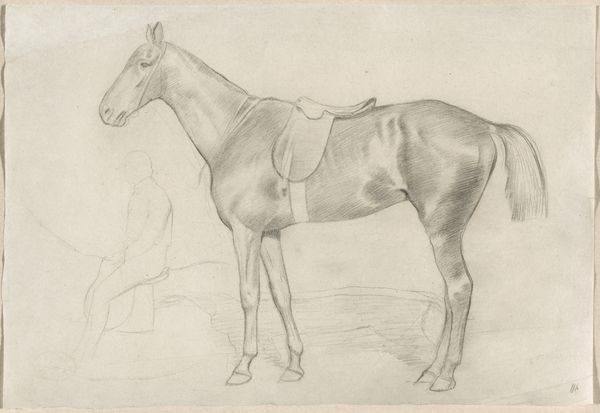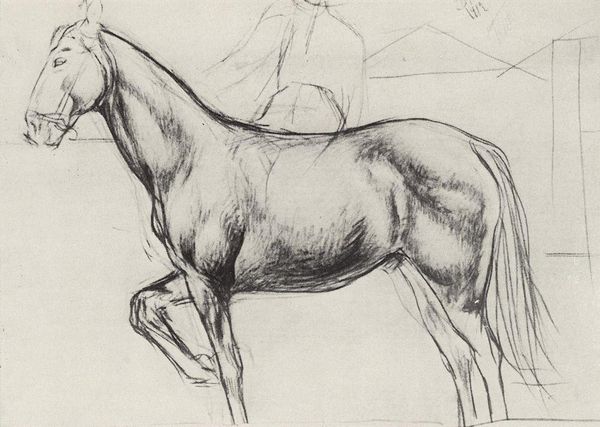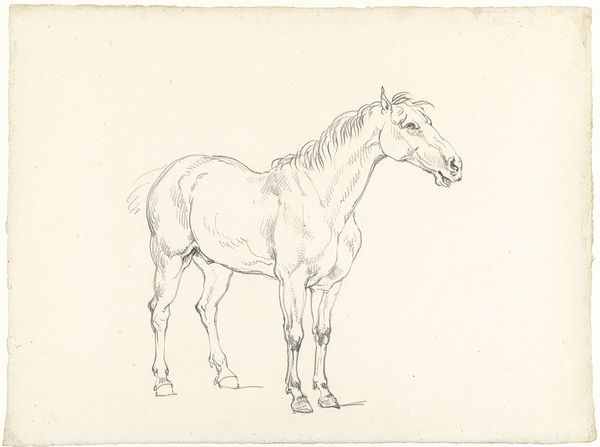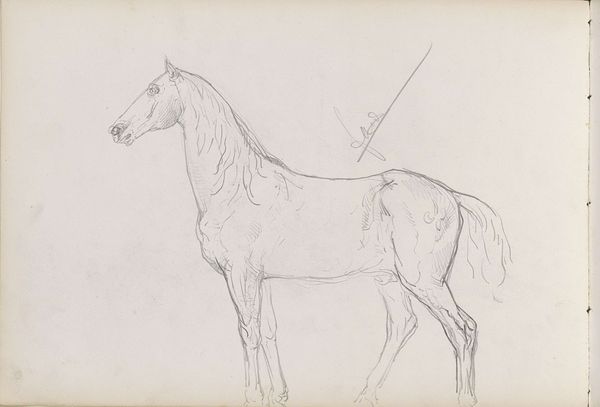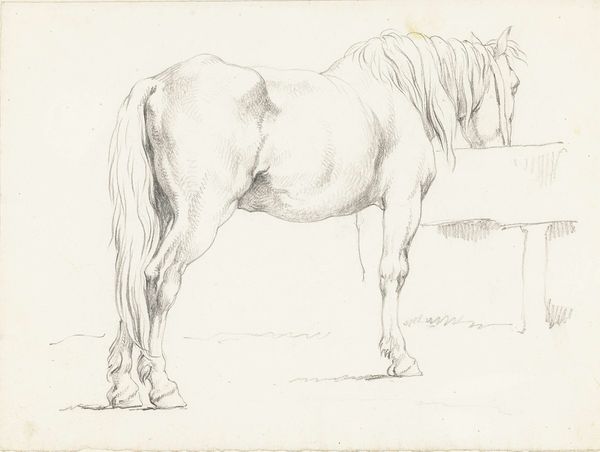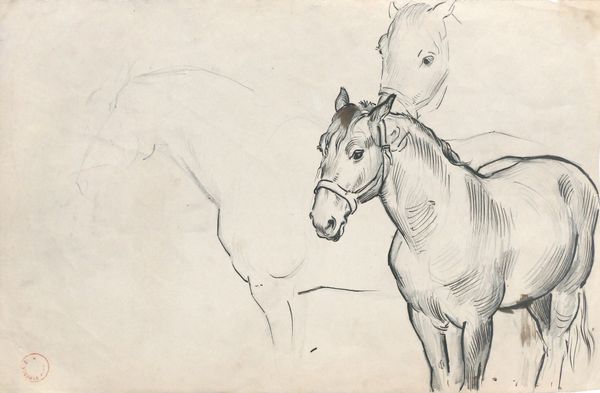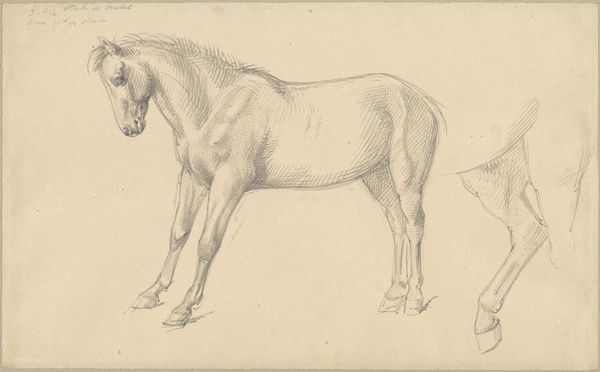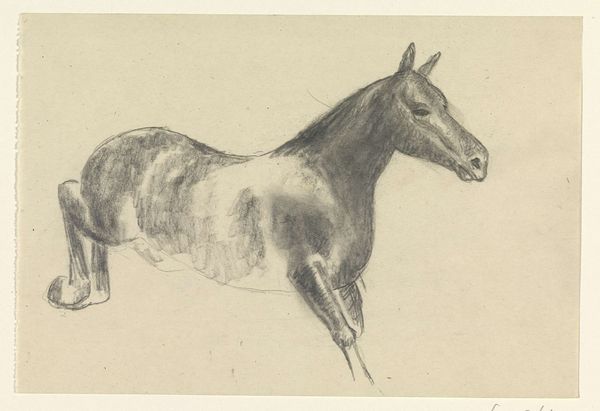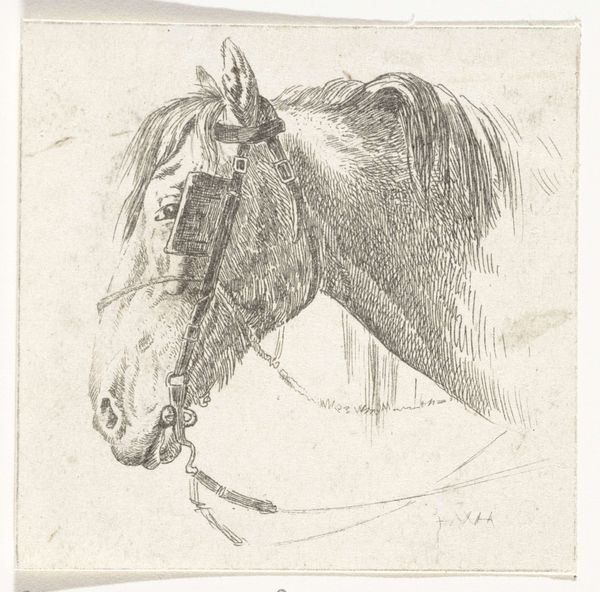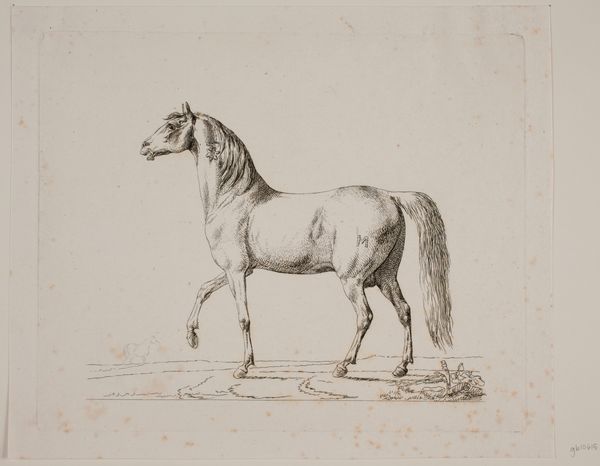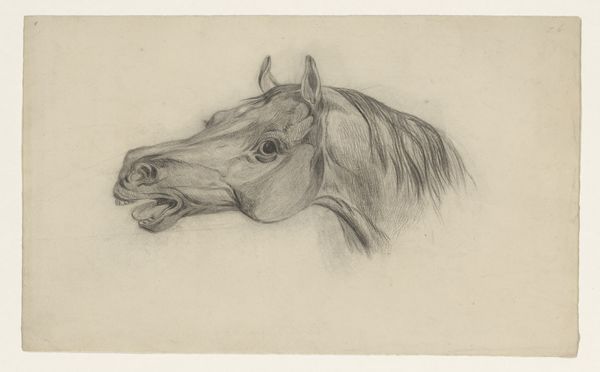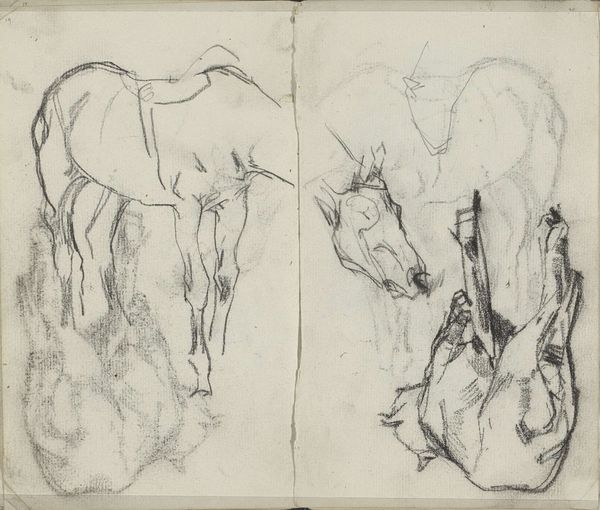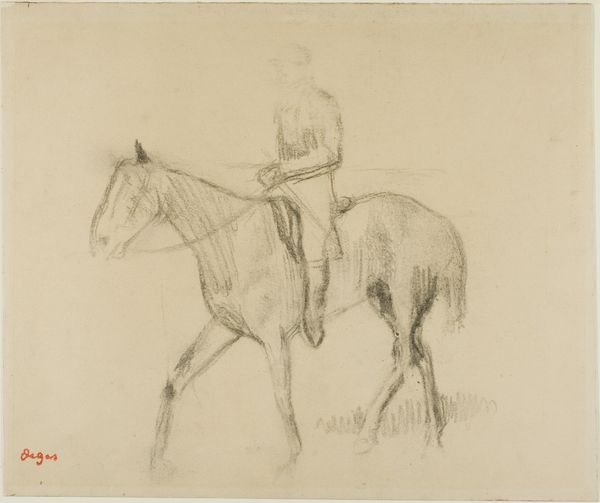
Dimensions: 26.7 x 34.8 cm
Copyright: Public domain
Editor: This drawing, "Study for Semiramis Building Babylon," done around 1861 by Edgar Degas using pencil and graphite, intrigues me. The horse is rendered so realistically, but the background figures are barely suggested. How do you interpret this work, given its preparatory nature? Curator: I see echoes of power and control, don't you think? Even in a preliminary sketch, the horse becomes a loaded symbol. It has long signified status, energy, even unbridled passion. Degas likely selected the animal to connect Semiramis to the archetypes of leadership: dominance and command, specifically. What sort of ruler would choose to depict themselves this way? Editor: Interesting! I hadn't considered the horse as directly representative of Semiramis herself, more as just an element in her retinue, or a vehicle of transit, nothing more. Curator: But what does the *act* of building signify, within this cultural memory? Construction isn't merely utilitarian; it’s a physical manifestation of ambition. The hazy background figures, though incomplete, add another layer. They suggest the mass mobilization required for such grand endeavors. And look closely at those vertical strokes--they feel oppressive and restrictive. Editor: You're right, I do see it now! The incomplete nature amplifies a sense of overwhelming labor. Were such depictions typical in the 19th century when a female ruler was at issue? Curator: Sometimes, yes. It challenged then-contemporary norms by presenting an authoritative woman—but rooted in the distant past, safely outside immediate social anxieties. Think of the loaded, patriarchal myths concerning ancient rulers, such as the various retellings of the fall of the Roman Empire or biblical tyrants; Degas seems interested in the symbolic nature of nationhood. Editor: I never thought about the combination of ambition, labor, and gender being conveyed through these choices, even in a preliminary drawing. Curator: Symbolism often operates subtly; that’s why close readings across art and culture are revealing. This approach to seeing carries significant value to many fields!
Comments
No comments
Be the first to comment and join the conversation on the ultimate creative platform.
